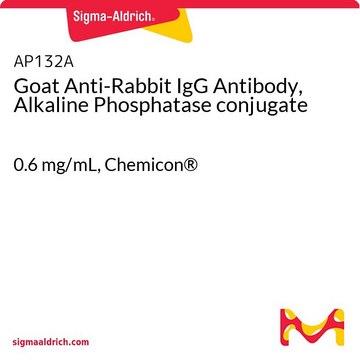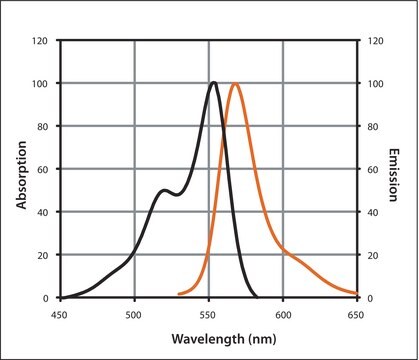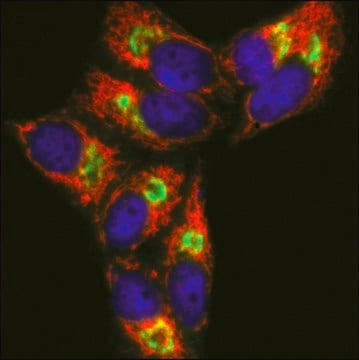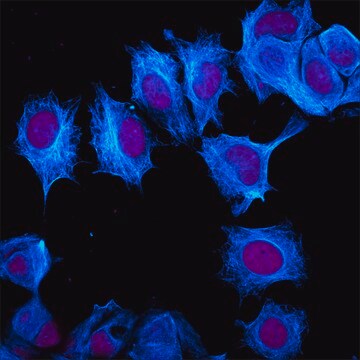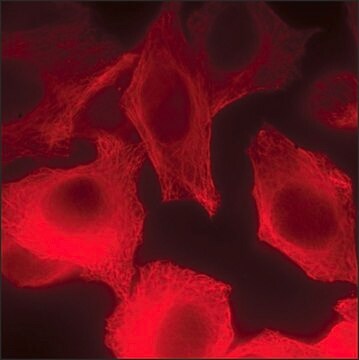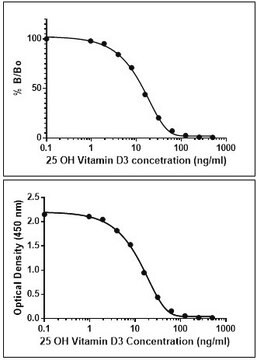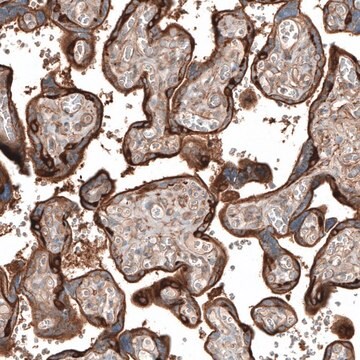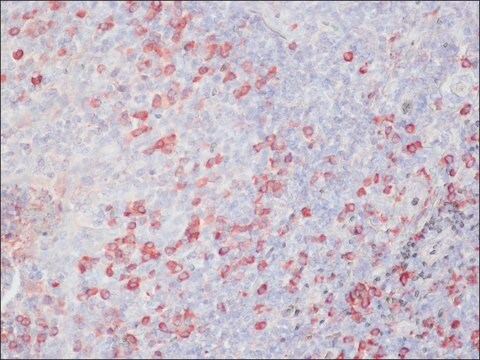SAB4600031
Anti-Chicken IgY (H+L), highly cross-adsorbed, CF™ 488A antibody produced in donkey
~2 mg/mL, affinity isolated antibody
Synonyme(s) :
Chicken IgY Antibody
About This Item
Produits recommandés
Source biologique
donkey
Niveau de qualité
Conjugué
CF™ 488A conjugate
Forme d'anticorps
affinity isolated antibody
Type de produit anticorps
secondary antibodies
Clone
polyclonal
Forme
buffered aqueous solution
Espèces réactives
chicken
Concentration
~2 mg/mL
Technique(s)
flow cytometry: 1-10 μg/mL
immunocytochemistry: suitable
immunohistochemistry: suitable
indirect immunofluorescence: 1-10 μg/mL
Fluorescence
λex 490 nm; λem 515 nm
Conditions d'expédition
dry ice
Température de stockage
−20°C
Modification post-traductionnelle de la cible
unmodified
Description générale
CF™ 488A is a green fluorescent dye with excitation argon laser line at 488nm. CF™ 488A is minimally charged, thus, it reduces non-specific binding of antibody conjugates. CF™ 488A is a highly water-soluble and pH-insensitive dye with molecular weight of ~710. This dye has absorption/emission maxima at 490/515nm and it is highly photostable.
Spécificité
Immunogène
Application
Caractéristiques et avantages
Forme physique
Notes préparatoires
Informations légales
Clause de non-responsabilité
Vous ne trouvez pas le bon produit ?
Essayez notre Outil de sélection de produits.
Code de la classe de stockage
10 - Combustible liquids
Classe de danger pour l'eau (WGK)
WGK 2
Faites votre choix parmi les versions les plus récentes :
Certificats d'analyse (COA)
Vous ne trouvez pas la bonne version ?
Si vous avez besoin d'une version particulière, vous pouvez rechercher un certificat spécifique par le numéro de lot.
Déjà en possession de ce produit ?
Retrouvez la documentation relative aux produits que vous avez récemment achetés dans la Bibliothèque de documents.
Les clients ont également consulté
Notre équipe de scientifiques dispose d'une expérience dans tous les secteurs de la recherche, notamment en sciences de la vie, science des matériaux, synthèse chimique, chromatographie, analyse et dans de nombreux autres domaines..
Contacter notre Service technique